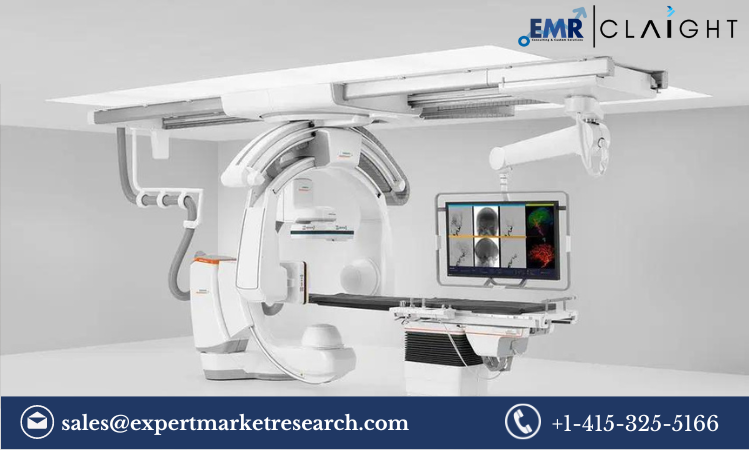Cardiovascular diseases (CVDs) are among the leading causes of death globally, accounting for over 17 million fatalities annually. With an aging global population, rising obesity rates, and increased stress levels due to modern lifestyles, CVDs are projected to become even more prevalent. Diagnosing these conditions early is crucial, and angiography devices are at the forefront of this mission, providing essential insights into heart health. The angiography devices market is anticipated to grow rapidly, especially with predictions indicating a 2.3% rise in CVD prevalence from 2024 to 2032. This growth is propelled by technology and a broader scope of applications, among other factors.
What’s Driving the Demand?
1. Cardiovascular Disease: A Growing Concern
- Increased Prevalence of Risk Factors: Factors like poor diet, lack of exercise, high stress, and smoking are all associated with higher rates of cardiovascular conditions. The growing prevalence of these risk factors, especially in developing countries where lifestyle shifts are rapid, drives the demand for effective diagnostic tools.
- Demand for Early Detection: With growing awareness, more people seek early diagnosis and monitoring. Angiography devices are critical in spotting potential problems before they become life-threatening. Hospitals and clinics are increasingly investing in these devices to meet the growing demand for heart health assessments.
2. Cutting-Edge Technological Advancements
- 3D and 4D Angiography Imaging: 3D angiography offers a detailed look at blood vessels, which is particularly helpful for complex cases like congenital heart defects or aneurysms. Some companies are even exploring 4D imaging, which adds real-time movement to 3D visuals, giving surgeons a better understanding of blood flow and vessel conditions.
- AI Integration in Diagnostics: Artificial intelligence can analyze angiography images faster than human experts and detect subtle indicators of disease. This helps reduce diagnosis times and enhances accuracy, which is crucial in emergency settings. The adoption of AI technology in imaging is still growing, and its presence is expected to be a significant factor in the market’s future.
- Minimally Invasive Techniques: The trend toward minimally invasive procedures has made angiography more popular, as patients and healthcare providers alike prefer less invasive options that reduce recovery time and procedural risks. Advances in catheterization and contrast agents make these procedures safer and more accessible.
3. Expanding Applications Beyond the Heart
- Neurovascular Applications: Neurovascular conditions like stroke, aneurysms, and other cerebrovascular diseases are now being diagnosed with angiography. This technology provides essential insights into the structure and function of blood vessels in the brain, helping doctors better understand complex conditions.
- Oncological Imaging: In cancer diagnostics, angiography helps track blood vessel growth and patterns in tumors. Detecting these changes early is crucial in assessing how tumors respond to treatments, providing a wider scope for angiography devices in non-cardiovascular applications.
Key Playrs Shaping the Market
The angiography devices market is competitive, with key players continuously innovating and differentiating their offerings. Let’s take a closer look at the major companies and how they’re influencing the industry:
- Siemens Healthineers: Siemens is a major player in healthcare imaging, focusing on integrating AI into its angiography devices for enhanced diagnostic precision. Their advanced software solutions also allow better imaging clarity, which is a top priority in diagnosing vascular conditions.
- Canon Medical Systems: Known for their ultra-high-definition imaging capabilities, Canon’s angiography devices are designed to offer clarity with minimal radiation exposure, a crucial factor in patient and practitioner safety.
- Medtronic and Boston Scientific: These companies specialize in minimally invasive solutions, emphasizing patient comfort and quicker recovery. They also focus on developing portable devices, catering to a growing telemedicine trend.
- Johnson & Johnson: With its substantial market presence, Johnson & Johnson is focusing on creating affordable, versatile angiography devices aimed at high-growth emerging markets.
Challenges on the Road to Market Growth
1. High Costs of Devices and Procedures
- Initial Investment Costs: Advanced angiography devices and related equipment are costly. Hospitals, especially in low- and middle-income countries, find it challenging to invest in these devices due to budget constraints, limiting the market’s overall reach.
- Cost of Maintenance and Upgrades: High-tech devices require regular maintenance, software upgrades, and skilled operators, further adding to the long-term costs. This financial burden can deter healthcare facilities from adopting these devices.
2. Regulatory Approvals
- Stringent Regulations: Medical devices face rigorous scrutiny from health authorities like the FDA and EMA to ensure safety and efficacy. This process is often lengthy and expensive, and any changes in regulations can further delay product launches.
- Impact on Innovation: While necessary for patient safety, regulatory challenges can slow down innovation, as companies must continually adapt their products to meet compliance standards.
What’s Next? Emerging Trends and Innovations
The angiography devices market is experiencing a wave of innovation. Here’s what we can expect in the near future:
- AI-Powered Diagnostics: AI isn’t just a buzzword; it’s already showing promise in angiography. With machine learning algorithms, AI can help radiologists detect early signs of diseases that may be hard to spot otherwise. This technology is expected to enhance diagnostics and reduce the time to diagnosis significantly.
- Portable and Wearable Devices: As healthcare becomes more patient-centered, portable angiography devices are becoming a reality. Portable devices are especially beneficial for remote and outpatient settings, where patients can be diagnosed without traveling to a hospital.
- Precision Medicine and Personalized Healthcare: As the healthcare industry shifts towards personalized medicine, angiography devices are also adapting. Customized diagnostics and treatments based on individual patient needs are becoming more common, offering more precise and effective outcomes.
Global Market Overview: Region-Wise Insights
Understanding the market regionally is essential, as different areas are experiencing varying degrees of demand and adoption:
- North America: The U.S. leads in angiography device adoption, backed by a robust healthcare infrastructure and a high incidence of cardiovascular diseases. Favorable reimbursement policies and strong R&D investment make this a key market.
- Europe: European countries have stringent regulations but high healthcare standards. The demand for advanced imaging technologies is growing, and government-funded healthcare systems in countries like Germany and France are major contributors.
- Asia-Pacific: Rapid urbanization, a growing middle class, and rising healthcare awareness make APAC a significant market. Countries like Japan, China, and India are particularly promising, with both government and private investments aimed at improving healthcare infrastructure.
- Latin America and MEA: These regions are emerging markets with untapped potential. A growing demand for affordable healthcare solutions, combined with rising rates of cardiovascular disease, is expected to drive the adoption of angiography devices.



